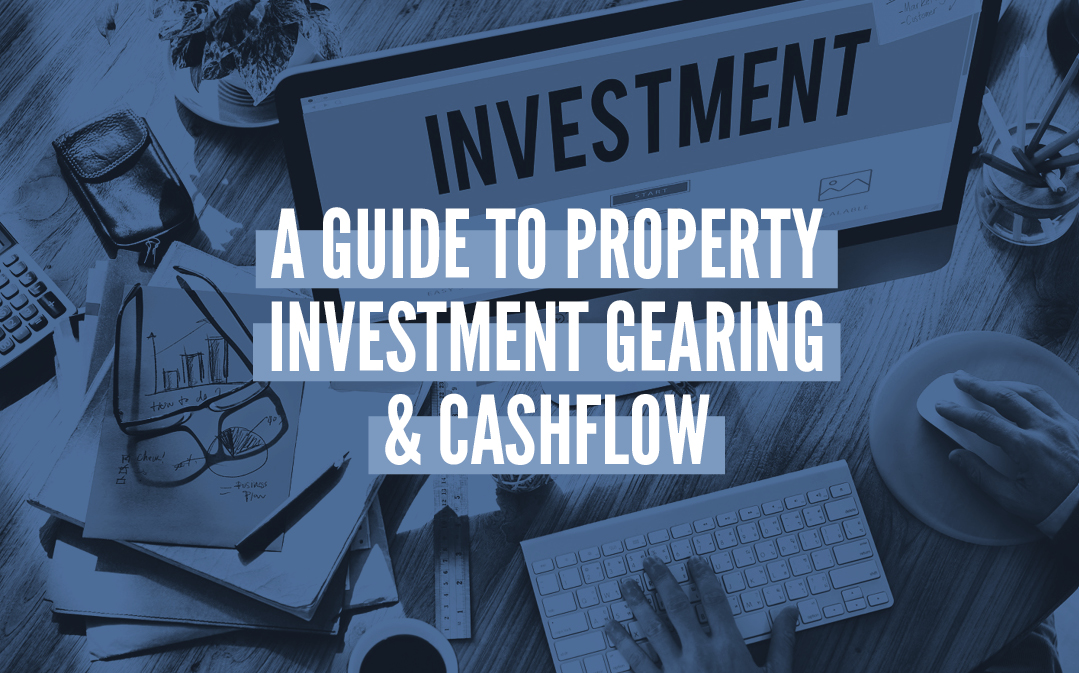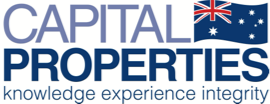What is gearing?
In property investment, the term ‘gearing’ describes borrowing money to buy a property. In other words, if you take out a loan to buy a rental property, your investment is geared. Most investors use some gearing – aka, a loan or mortgage, to fund their rental property.
Gearing also determines the cashflow of your investment. Cashflow is the amount of money you have when you’ve received rent from your tenant minus the expenses associated with the property. In summary: cashflow = total rental income – total rental property expenses. In this blog post, we’ll explore the concepts of negative, neutral, or positive gearing and cashflow and explain what it means for property investment.
Positive, neutral and negative gearing strategies have different benefits and risks. So, making the decision about how to gear your property should be made according to your personal circumstances, risk tolerances, current income and property investment goals. We can help you decide what which option is best for you at our free Capital Properties Discovery Session.
On the go? Here’s 30 seconds of take outs:
- Gearing describesborrowing money to buy an asset.
- Cashflow = total rental income – total rental property expenses.
- There are 3 types of gearing: positive, neutral and negative.
- Positively geared = the rental return is more than your expenses.
- Pros = Positive cash flow, great for investors, passive income.
- Cons = Taxed, less positively geared properties, less capital growth.
- Negatively geared = rental return is less than expenses.
- Pros = Long-term capital growth, tax deduction & high rental demand
- Cons = Capital loss, limited cashflow & potentially more volatile.
- Neutrally geared= the income and expenses are equal.
- Pros = Tax neutral, less risk, great for investing with super.
- Cons = Hard to maintain, neutral cashflow, unpredictable.
- When you sell the property for profit you’ll have to pay capital gains tax.
Keep reading >>
Why is ‘gearing’ important?
When you borrow funds to invest in an investment property, the aim is to generate an income from the asset. This income might come from the rent, or capital gains, or a combination of both.
The income earned will either positively, negatively or neutrally geared, depending on the amount you are paying back to your lender and other expenses.
A positively geared property means that your rental return (i.e. the rental income you receive from your tenants) is higher than your interest repayments and other property-related expenses.
A negatively geared property means your rental return is less than the amount you must pay on interest repayments and property-related expenses.
A property is neutrally geared if the income and expenses are equal and balance each other out.
Pros & cons of NEGATIVE gearing
Negative gearing happens when the rental income generated by an investment property is less than the expenses for owning and maintaining the property. Although this might seem like a loss when you have to pay money out of your own pocket, there are some immediate and long-term benefits to negative gearing, as long as you can confidently cover the costs through other investments or your Defence Force income.
Pros of negative gearing
Long-term capital growth
Many investors will purchase a property in a location with strong predicted future growth (usually between 7 to 10 years) so when it grows in value, they can sell it for a profit. With the right property, the gains from capital appreciation will outweigh the losses over the previous years.
Tax deduction
One of the main advantages of negatively gearing an investment property is the ability to offset any loss incurred during that financial year against your salary and any other income you earn. This reduces your overall taxable income and how much tax you have to pay.
You can claim tax deductions on depreciation on the actual property, building works and maintenance, capital goods e.g. dishwasher or washing machine, property management fees, body corporate fees, insurances, land tax, stamp duty, mortgage fees, council and water rates etc. In many cases, the tax savings can be greater than the total net loss of the negatively geared property.
Low rents = high demand
Maintaining lower rents helps to create great long-term relationships between tenants and landlords, resulting in less agency fees and costs to advertise for new tenants. It usually means that the property is less likely to be vacant for long periods of time.
Note, in Australia, there have been calls (in particular by the Greens party) to phase out negative gearing in order to address the housing crisis. But the Albanese government is clear that the policy is not up for review, saying in a memo “We have no plans to change negative gearing rules, and don’t intend to reheat policies from the 2019 election”.
Cons of negative gearing
Capital loss
Although properties will usually experience capital growth, it’s possible that the property market could fall in the area you invest in. That’s why it’s key to do your research before you invest. Our experts write blog posts like “How to buy well” to help you with this, though a one on one chat with our Buyer’s Agent will be even better.
Limited cash flow
If you’re highly geared, you’re more vulnerable to rate rises, which can tighten your cash flow. Less cash flow also means a reduction in your borrowing capacity, making it harder to grow your portfolio.
Potentially more volatile
If you lose your main source of income or can’t find tenants for an extended period of time – you may not be able to cover your loan and interest repayments. Defaulting on payments means increased fees and could even result in having your property repossessed.
Pros & cons of NEUTRAL gearing
Neutral gearing is also known as break-even gearing or cashflow-neutral. This happens when the rental income just covers the expenses associated with the investment property. There may be a small loss or profit, but it’s insignificant enough to make any changes to your tax status. In reality though, neural gearing is a strategy that’s difficult to maintain due to fluctuations in income and expenses.
Pros of neutral gearing
Tax neutral
Neutral gearing doesn’t provide immediate tax benefits in the same way as negative gearing, however the interest and other charges involved with borrowing money can be deducted from your overall taxable income. If your income and spending remains the same, there will be no change to your tax status.
Less risk
In a neutrally geared property, there are little to no costs related to its upkeep. This reduces the immediate financial burden, allows a more predictable cashflow and is an attractive option for risk-averse multi-property investors who stand to benefit from capital gains.
Great use of super
Neutral gearing works well when you’re investing through a self-managed super fund (SMSF), as it doesn’t reduce the fund’s wealth.
Cons of neutral gearing
Hard to maintain
Neutral gearing doesn’t usually happen naturally as there are always going to be fluctuations in rates, expenses, tenancies etc. Unless you’re a seasoned property investor with a significant property investment portfolio and a flexible accountant, it’s unlikely you’ll be able to maintain neutral gearing consistently.
Neutral gearing – neutral cashflow
If you’re not prepared for changes, e.g. increasing rates if your loan’s coming off a fixed rate, managing cashflow in a neutrally geared property can be challenging. You could inadvertently end up in a negatively geared situation and struggle to meet the demand of the increased expenses.
Unpredictable
No matter how stable your current income and circumstances, there’s always a possibility that something might change and create a very different financial situation. Think illness, divorce etc. Inadvertently falling below the minimum threshold and/or having to default on your loan might mean that you’ll have to make an immediate additional cash deposit or sell other investments to cover penalties. Your lender could also ask for the loan to be repaid in full immediately.
Pros & cons of POSITIVE gearing
When the rental income from an investment property exceeds the expenses, this is called positive gearing. That means the rental payments from your tenants will cover all maintenance costs, mortgage fees, interest payments etc, as well as an amount of superfluous cash!
Pros of positive gearing
Positive gearing = more cash flow
Positive gearing leads to positive cash flow and ongoing profits which can be a useful income stream for investors. That immediate income can be used to top up daily expenses, pay down the mortgage, put into savings, or re-invested. A positive cash flow also means less pressure if your financial circumstances change.
Great for investors
Positively geared properties are considered less risky than negatively geared properties and that makes them highly attractive investments. Investors with positively geared properties will usually find it easier to secure another home loan, which will help to expand their property investment portfolios.
Passive income
Buying a positively geared investment property means that you’re able to generate a steady income stream while still being able to benefit from the property’s long-term capital growth.
Taxable rental income
When your property is positively geared, the net rental income is subject to income tax, along with your other sources of income, so you can expect a hit at the end of the year. However, you can claim on depreciation, mortgage interest and any rental expenses to maximise your returns.
Finding positively geared properties
In Australia, 60% of investment properties are negatively geared. So positively geared properties are in high demand. And of course, high demand = higher prices and that often means lower rental yields. Therefore, it’s vital to consider if the cash flow covers interest rate fluctuations, vacancy periods, maintenance costs etc.
Less capital growth
Positively geared properties often tend to be in rural or regional areas, which may not deliver the same capital growth.
Consider capital gains tax (CGT)
We can’t discuss gearing without quickly referring to capital gains tax. Just as we pay tax on any income, we must also pay tax on any net profit we make when we sell a property. As the profit is generally a capital gain, the tax on this profit is called the capital gains tax (CGT).
The amount of CGT we pay depends on multiple factors. For example:
- The property purchase price.
- Time of ownership– You may be eligible for a discount on your CGT if you sell for a profit after more than a year of ownership. Note, CGT does not apply to your primary residence if it hasn’t generated an income.
- Property sale price.
- Your current taxable income. Capital gains are taxed at the same rate as taxable income.
Other relevant costs = purchase or sale costs including renovations or marketing.
So, what’s best for you? Negative, Neutral, or Positive (Cashflow)
Gearing plays a vital role in property investment, and understanding gearing and cashflow is vital for ADF members to make informed decisions. Negative, neutral, and positive gearing each have their own advantages and disadvantages and in an ideal world, a well-balanced investment portfolio might contain each. Ultimately, choosing the best gearing depends on your individual circumstances and investment goals.
At Capital Properties, our experts work with you to thoroughly assess your personal financial situation, including your income, expenses, and ability to service loans. As well as determining your risk tolerance and long-term financial goals. We’ll help you evaluate the current property market and best potential growth prospects and understand the impact of negative, neutral, or positive gearing on your tax position.
Our mission is to make sure you have the knowledge, confidence and tools to successfully navigate property investment alongside your commitment to the Australian Defence Force for financial future security.






